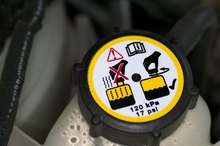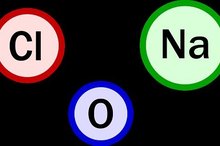What Are the Dangers of Ethylene Vinyl Acetate?
Ethylene vinyl acetate is a type of plastic — a polymer with a wide variety of uses, both residential and industrial. The Food and Drug Administration (FDA) has stated that ethylene vinyl acetate is safe when used in food production, packaging or transportation, and it's not an especially dangerous material. As with any other substance, however, there are some precautions you should observe in its use.
Ingestion and Inhalation
Ethylene vinyl acetate (EVA) is not hazardous by ingestion, unless you eat an object made of EVA that's big enough to cause choking or other problems — in which case it would pose the same hazards as any other plastic object. Inhalation does not pose a threat unless you actually work in a processing plant. If the material is processed at high temperatures — 400 degrees Fahrenheit and above — it may emit fumes that could act as irritants. This situation, however, should only be a concern in the manufacturing process, not during residential use.
- Ethylene vinyl acetate (EVA) is not hazardous by ingestion, unless you eat an object made of EVA that's big enough to cause choking or other problems — in which case it would pose the same hazards as any other plastic object.
Reactivity
What Are the Dangers of Sodium Acetate?
Learn More
EVA is not considered flammable, according to the material safety data sheets (MSDS) provided by its manufacturers. At very high temperatures it can burn, although it will only auto-ignite at temperatures of 644 degrees Fahrenheit or above. Consequently, combustion is not likely to be a problem with EVA objects around the home. It's highly stable and chemically inert, although it should not be brought into contact with very strong acids or strong oxidizing agents, since it does have the potential to react with these types of compounds.
- EVA is not considered flammable, according to the material safety data sheets (MSDS) provided by its manufacturers.
- At very high temperatures it can burn, although it will only auto-ignite at temperatures of 644 degrees Fahrenheit or above.
Residue
EVA may contain some traces of the vinyl acetate used to make it; concentrations vary, but may range up to 300 parts per million. According to the MSDS, this level is not hazardous under ordinary conditions. According to the Agency for Toxic Substances and Disease Registry, there is no evidence to show that vinyl acetate is a human carcinogen, although the International Agency for Research on Cancer believes there is some limited evidence that it is possibly carcinogenic to humans 3.
Considerations
Uses of Phenyl Benzoate
Learn More
Don't bring EVA into contact with open flames or very high temperatures — baking it in your oven, for example, is not a good idea. EVA starts to melt at 167 degrees Fahrenheit, which is below the boiling point of water, so it's not a very heat-resistant material. It's important to note that objects made from EVA may also contain a wide variety of additives to add color or other desirable properties; these additives may have hazards of their own as well.
Related Articles
References
- CFR Code of Federal Regulations: Title 21, Volume 3
- Honeywell MSDS; EVA Copolymer; February 2006
- Agency for Toxic Substances and Disease Registry; Vinyl Acetate; July 1992
- Agency for Toxic Substances and Disease Registry. Centers for Disease Control. Vinyl Chloride.
Writer Bio
Based in San Diego, John Brennan has been writing about science and the environment since 2006. His articles have appeared in "Plenty," "San Diego Reader," "Santa Barbara Independent" and "East Bay Monthly." Brennan holds a Bachelor of Science in biology from the University of California, San Diego.








